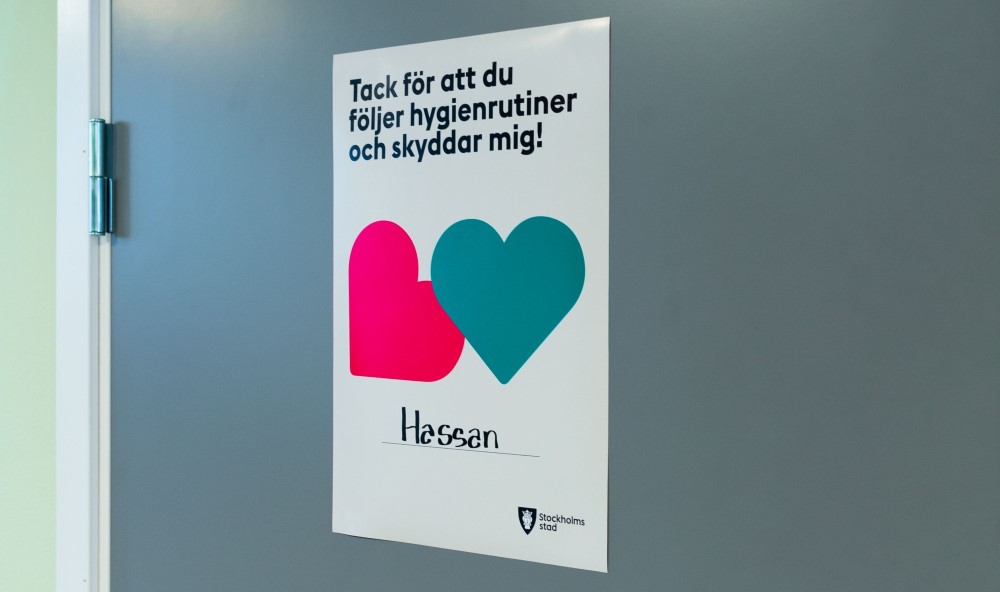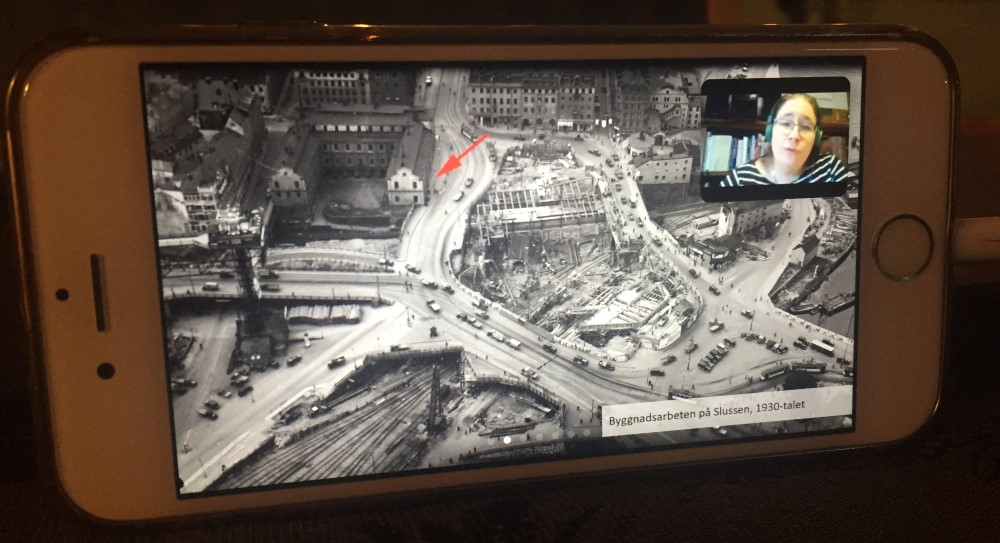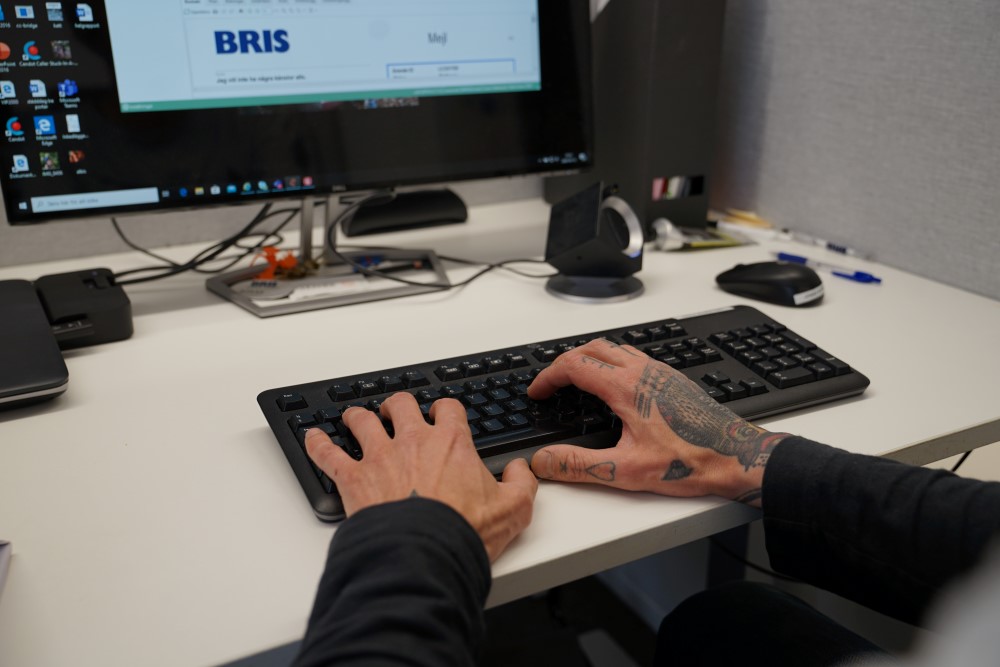Don't miss a thing - follow us in our newsletters and channels
We talk about exciting innovations, funding, events and how your organization can become more innovative.

Guided city walks transformed into digital experiences from the couch at home, a virtual assistant that provides support directly to the children who contact Bris and nudge initiatives that help reduce the risk of infection in nursing homes. These are three examples of innovations that have taken shape despite, and thanks to, the pandemic.
The pandemic has hit many industries hard. But the crisis has also created opportunities for change. It has forced us to think new, to see the real needs and to try new collaborations. By taking advantage of people's creative ability, many new innovations have emerged. Innovations in large and small that have benefited during the pandemic - and which will continue to benefit for a long time to come.
By focusing on innovation in crisis Vinnova has given support to over 60 project. Here you can read about three of them.
Following the increasingly strict hygiene routines has been a must during the pandemic. Especially in healthcare. But it is not always easy to do the right thing, and despite knowledge, it can be difficult to get new routines in place. Stress, habits and other human factors make it easy to forget in stressful situations.
 Nudging efforts, including in the form of visual reminders, made the staff at the nursing home better able to follow the stricter hygiene routines.
Nudging efforts, including in the form of visual reminders, made the staff at the nursing home better able to follow the stricter hygiene routines.
The nursing home Alströmerhemmet in the city of Stockholm had identified shortcomings in its hygiene routines. Together with the Behavior Lab, work was initiated to investigate whether nudging could help healthcare professionals to better follow hygiene routines.
- Simply explained, nudging means trying to bring about behavioral changes through small "pushes", simple efforts that will help people go from will to action, says Ida Lemoine, project manager at the Behavior Lab. We know that nudge efforts have been shown to have positive effects on behavior in many other areas. But working with it in elderly care and care is relatively new in Sweden.
In all work with nudging, there is a great focus on how people actually act.
- In order to bring about a change in behavior, it is important to first map a zero situation, what reality looks like, says Ida. We need to know, do not guess. We work with user travel, which is a different way of structuring an interview by simply letting the staff tell you what they do during a day, from start to finish. Then we can map the hygiene journey over a working day, all occasions and places.
The Behavior Lab has also been involved in the nursing home and observed the environment by following the work and capturing the staff's experiences.
- We saw that it was especially difficult to get in routines for things that you do not have to strictly follow otherwise, such as using visors and mouth guards, and it became clear that more everyday reminders and efforts were needed that made it easy to do the right thing, says Ida.
Based on the survey, a gross list was made of all conceivable efforts that could remind and support the staff to follow the hygiene routines. Thereafter, each part was targeted based on the insights gathered. Together with the nursing home, about 20 initiatives were selected, including physical decals with a reminder to use mouth guards and visors, decals on the floor to clarify room division and furnishing at the right distance, decals that draw attention to infectious surfaces and visual checklists that remind of the importance of to clean work materials properly to reduce the spread of infection.
We also saw that there was an opportunity to strengthen the empathic relationship between the staff and the residents, for example through a name tag marked "I have a visor to protect you and me"
All materials are graphically designed to signal "here and now" and are easy to remove when the pandemic is over.
- We also saw that there was an opportunity to strengthen the empathic relationship between the staff and the residents, for example through a name tag marked "I have a visor to protect you and me", says Ida. On the residents' door, we put up a friendly poster, where the resident handwritten his name and thanked in advance for the consideration.
To see how much the efforts have helped, measurements were made before and after implementation by counting the number of units consumed. The result has been above expectations and showed, among other things, that the staff now used three centilitres more hand alcohol per person per day, and that the consumption of mouth guards increased by 313 percent. The staff themselves thought that it had become easier to follow new routines and the material has been requested by several departments at the nursing home.
There is now a 'nudge kit' for hygiene-safe behaviors that can be easily implemented in nursing homes in other regions across the country, and which will be useful in future crises. Temporarily increased hygiene routines are also needed in other acute cases such as outbreaks of winter vomiting or other severe influenza.
- There is great potential for working with nudging, especially in healthcare, says Ida. In many other issues, there is often a gap between what people say they want and why they actually do it. For example, many people say that they take a bus for the sake of the environment, but they actually do it because it is cheaper. In healthcare, on the other hand, it is often an incentive to really want to help people. You want to do the right thing. With that as a starting point, it is easier to create change, because the will is there from the beginning.
The cultural sector has also been hit hard by the pandemic. Audience numbers have been limited in various rounds and many businesses have had to close completely. Stockholm City Museum is one of those who have had to make major changes in their activities.
 By mixing filmed material, archive images and live guided tours, the City Museum's interactive hybrid walks became even more appreciated than the physical walks.
By mixing filmed material, archive images and live guided tours, the City Museum's interactive hybrid walks became even more appreciated than the physical walks.
- In normal cases, we arrange about a hundred city walks three to four times a week, says Maria Avellone Neel, event manager at the city museum. Now we could not implement any at all, which meant that business opportunities disappeared for both us and our external guides.
Central to the city walks, however, are the stories themselves. They were still there. Would it be possible to make them available anyway, even though the audience cannot get there physically? Together with the communications agency Fabel, which has long been involved in the impact of digitalisation on the cultural sector, a couple of different alternative digital solutions were developed.
The priority was to be able to quickly come up with a format to test why the solutions were based on several components being existing. Already after a month, the first digital tour was held, where the guide simply broadcast live his usual hike.
- Initially, we thought it should be as simple as possible, says Max Valentin at Fabel. But an at least as important part of the project was to investigate whether a digital experience could create added value for viewers, and we developed a so-called hybrid hike.
By combining pre-recorded films, archive material and drone images with live broadcast talk from the guide and films from the hike itself, the experience became completely different. The hybrid tours were broadcast via Zoom, which also contributed to a participatory feeling among the audience. You could raise your hand, ask questions - and get answers.
Measurements showed that the audience even thought that the hybrid hikes were better than the physical hikes.
- The audience could break in with a question, whereupon the technician could quickly produce a picture for it, says Max. With clipped archive images, you can travel back in time, you can produce clear close-ups. It became very popular.
Measurements showed that the audience even thought that the hybrid hikes were better than the physical hikes. It was also clearly noticed that some form of live broadcast was required for the willingness to pay to exist.
- It is a certain nerve in live broadcasting that attracts, says Max. The hybrid hikes certainly require a little more in staff costs, and a larger audience to get around financially. But it offers great opportunities, take for example school classes, where you could have several classes at the same time.
Starting work on implementing new technology sheds light on overall challenges but also on certain specific problems.
- There are overall challenges such as educators and guides will need to work closer to the marketing department and IT division, says Max. But we also see specific challenges such as the need for payment interfaces that even foreign visitors feel safe to use.
An important aspect for Soffturism was to develop solutions that could work even after the pandemic. To spread the results, several seminars have been arranged aimed at the museum sector. The hope is that there will be an increase in knowledge for the cultural heritage sector in general, perhaps also for general tourism outside the institutions.
- By making the city walks accessible to many more, we see a large market in the future, says Maria. Sofa tourism offers people to take part in our tours regardless of where they live and regardless of physical conditions. This is something we will continue to develop for a long time to come.
When the world trembles for the adults, the children are hit hard. The support organization BRIS, Children's rights in society, noticed early in the pandemic a large increase in children seeking help and support. 116 111 is the number for the national helpline for children and young people, and only in March and April 2020 did the calls increase by 30 percent. The average age of those who contact Bris is 14 years.
 During the pandemic, sex grew with children contacting Bris. A virtual assistant was developed, which could provide some support already in the queue.
During the pandemic, sex grew with children contacting Bris. A virtual assistant was developed, which could provide some support already in the queue.
- The chat queues for Bris could be very long, says David Sandberg Hjelm who works with strategic development at Bris. It was clearest that the children who were already having a hard time got it even tougher. We had many conversations about conflicts and domestic violence but also worse mood due to the pressured situation to cope with school at a distance. During the summer, depression increased by 100 percent compared with the previous year. Many safe, wise adults disappeared when the contacts with BUP take place digitally from home instead of the children being allowed to get there. For example, an eating disorder is much more complicated to deal with alone at home, when you are not allowed to see your therapist and are alone at home so much.
Bris was early to pay attention to and communicate the children's needs and was contacted by many who wanted to help them. Thanks to companies, authorities and private individuals, they were able to extend their opening hours, first by three hours, then even longer. From March 2021, Bris is open 24 hours a day.
Bris was soon contacted by the company Governo. During the call #vitecherupp, the tech industry had joined forces to offer their help in the pandemic. The association included Microsoft and Bris' own IT supplier Iver, and a project application was formulated for the development of a virtual assistant.
- Bris has been a digital organization for over 20 years and has worked with digital support for a very long time, says David. We know how important it is to start from scratch and examine the actual needs, not just develop something for the sake of technology, says David. We always work with expert groups, of curators, psychologists - and the children themselves. Children are experts in being children.
Thanks to the project support, Bris was able to make a comprehensive survey, and got a clear picture partly of what is technically possible and what the children want. Through extensive workshops and surveys, the needs were formulated and a virtual assistant was developed. A kind of chat robot, which can give the children some support already in the chat queue, and which hopefully can also make it easier for Bris' counselors to quickly get to grips with the child's situation.
The solution looks simple on the surface but is extremely complex in construction. This is especially noticeable when looking at the flow chart behind. There are many layers of security, anonymity and privacy protection. Bris has well-proven working methods that were also followed for the design of the cure. These are extremely sensitive substances and must be formulated carefully even in a digital support. For example, children should never feel that they are answering incorrectly. The answers in the chatbot are written by curators at Bris.
We must ensure that the technology is completely safe but at the same time so simple that it works for children who do not have the latest telephone model.
- We constantly get questions about safety, says David. Just daring to contact Bris is brave. There are, for example, apps that measure screen time and the other day we were asked if it can be seen in those apps that the child has been on Bris. We must ensure all this. Technically, it is also complex. We must ensure that the technology is completely safe but at the same time so simple that it works for children who do not have the latest telephone model.
Since the cure was introduced at midsummer 2020, it has become an important tool for curators and a faster way to reach children. Today, Bris continues to work with digital development.
"Even before the pandemic, we had seen that we needed to take the next step in our digital development," says David. We now have an area for digital development in our business planning for 2021, which we do with our own resources and try to implement. It is a direct continuation of the Vinnova-supported project, and we have two teams that only work with this.
Bris receives many questions from other organizations that are now getting started with chats, email questions and various functions, and emphasizes the importance of constantly starting from what is important for children and young people. To be able to respond to their needs and be on the platforms where the children themselves are. This applies regardless of whether there is a pandemic or not.
We talk about exciting innovations, funding, events and how your organization can become more innovative.
Last updated 31 October 2023